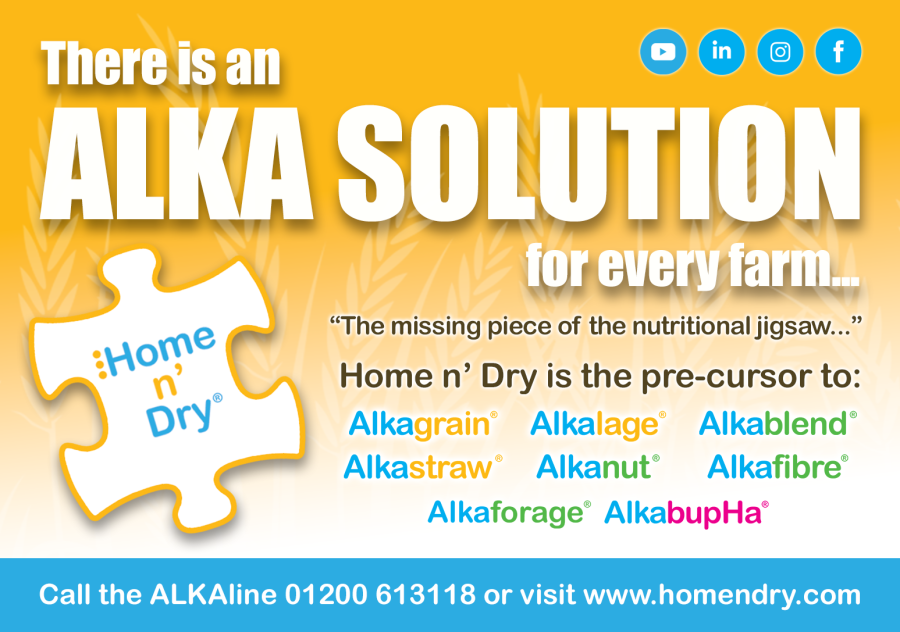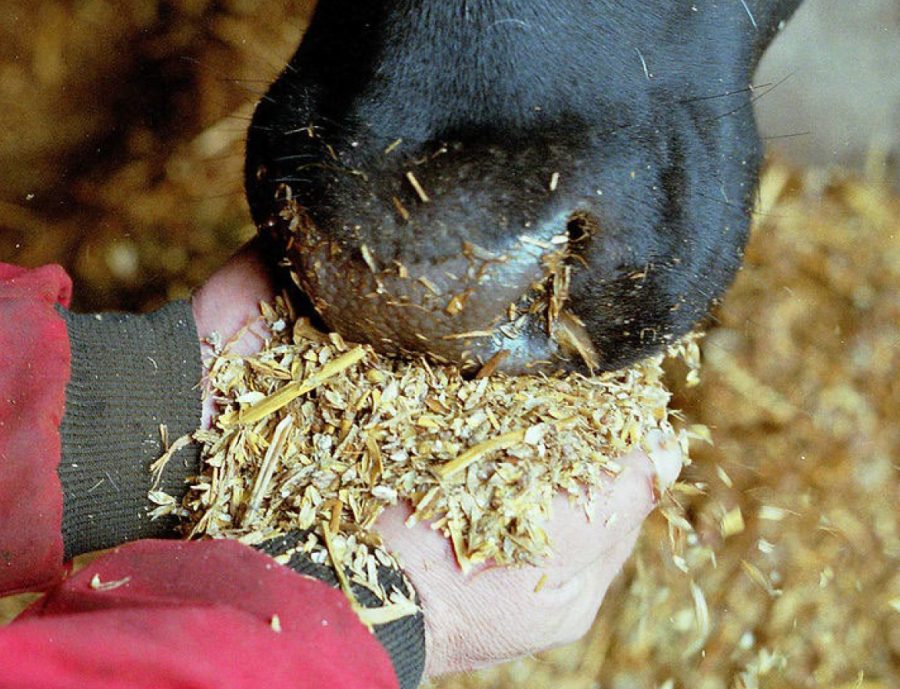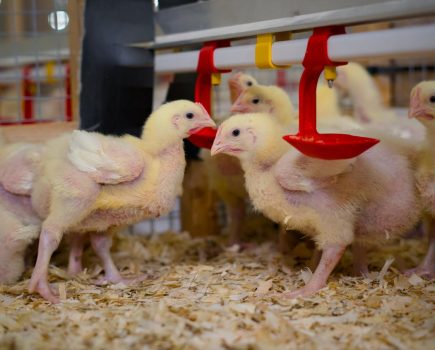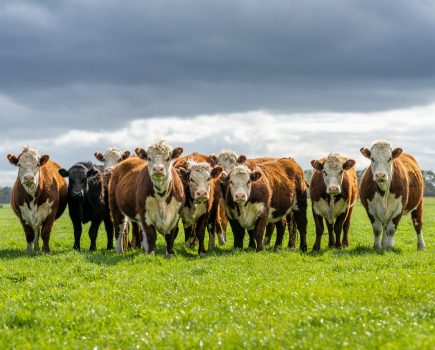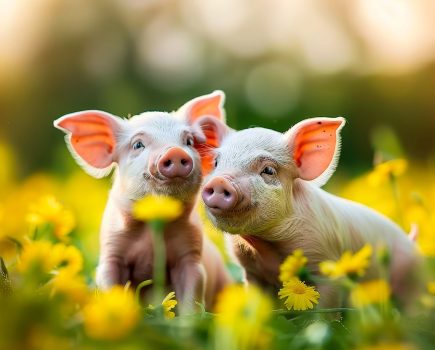Consider alkalage for optimising home-grown crops…
First cuts are in the clamp, and according to initial data from Trouw Nutrition, analyses are on average slightly poorer than previous years. With the wet start to the year and then a very dry May the grass has been stressed and is struggling to grow on again after first cuts.
With similar neutral detergent fibre (NDF) levels but higher lignin, the dynamic energy levels are lower compared to previous years. The result in many cases will be to supplement with more energy, in the form of starch and sugar sources, to support performance while feeding these silages. This increases the risk of sub-acute ruminal acidosis, which will further exacerbate the challenges on farm.
This may be the year to seriously consider treating a cereal crop which is ready for combining with Home n’ Dry pellets to produce alkalage, a complementary forage which has increased protein and digestibility.
Treating a ripe cereal crop with Home n’ Dry pellets allows the wholecrop to provide higher starch and digestibility than fermented wholecrop. The Home n’ Dry pellet treatment has the added advantage of having a pH of around 8.5 compared to a traditional wholecrop, which is around 4.5pH. This provides an alkaline product which will support the rumen health and reduce the risk of the sub-acute ruminal acidosis (SARA), when feeding higher starch and sugar levels this winter.
Because of the lack of grass growth throughout May, some farmers will be having some concerns about forage quantities that will be available for the winter. Alkalage can optimise home-grown crops to provide a forage that will be of useful nutrient value to fill some of the gap.
Making alkalage is a simple, one-step process which involves layering or mixing the cereal wholecrop in the clamp with the Home n’ Dry pellet. Once sheeted, the reaction of the pellet with cereal crop produces ammonia gas, which circulates through the clamp to treat the cereal and straw.
The outcomes include more digestible straw, already chopped, higher levels of starch and increased protein level. On farm, this reduces the requirement for purchased protein sources as well as reducing the time and fuel needed to chop straw for diets.
Although no-one knows what lies ahead for the rest of the summer, with continuing raw material volatility and the potential challenges of forage and grass availability, this is the ideal time to consider alternative solutions for feeding ruminants on farm. Using alkalage will help support rumen function, enable optimal use of home-grown feeds and provide a source of forage to balance all-grass silages, ultimately helping profitability and performance of animals on farm.
